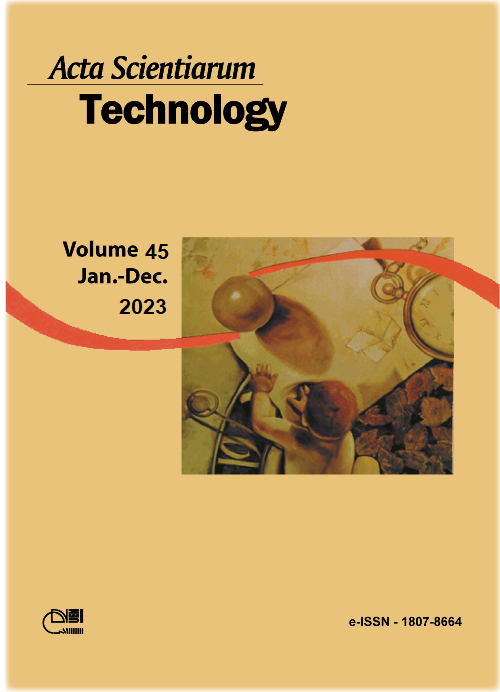Analysis of relative efficiency of vessels of passenger transportation in the Brazilian Amazon: an AHP-DEA approach
DOI:
https://doi.org/10.4025/actascitechnol.v45i1.58199Keywords:
data envelopment analysis; river passenger transport; energy efficiency.Abstract
Waterway transport is of great importance for the population of the Amazon Region. It is responsible for moving, according to Agência Nacional de Transportes Aquaviários (Antaq, 2018), approximately 9.8 million passengers and 3.4 million tons of cargo distributed by state, interstate longitudinal transport interstate and crossing. However, despite the great importance, there are several blockages related to the conditions of the roads and vessels in certain routes. The study in question proposes the use of a mathematical tool to analyze vessels from the relative efficiency involving parameters of input and output for two analysis scenarios: Energy Efficiency Analysis and Modality Analysis, being analyzed variables such as power, consumption, total time of the trip, total distance of the line of action, passenger capacity and ticket price. For that, the data of 652 vessels used in the Amazon region registered in the Brazilian states (Pará, Amazonas, Amapá and Rondônia) were verified, and from these data, a sample space of 148 vessels from the same utilization level was selected. With these data, a model was developed using the Data Envelopment Analysis (DEA) methodology, with the aid of the DEA-Solver software. After the use of the solver, the relative efficiency indexes of each vessel were obtained, allowing to rank and measure the efficient and inefficient Decision Units (DMU'S). Lastly, analysis of the general characteristics of efficient vessels were made in order to stratify the parameters that may have transformed them into efficient DMU`s, making it possible to trace a profile of the type of vessel employed in each type of line, thus helping in decision making of new projects.
Downloads
Downloads
Published
How to Cite
Issue
Section
License
DECLARATION OF ORIGINALITY AND COPYRIGHTS
I Declare that current article is original and has not been submitted for publication, in part or in whole, to any other national or international journal.
The copyrights belong exclusively to the authors. Published content is licensed under Creative Commons Attribution 4.0 (CC BY 4.0) guidelines, which allows sharing (copy and distribution of the material in any medium or format) and adaptation (remix, transform, and build upon the material) for any purpose, even commercially, under the terms of attribution.
Read this link for further information on how to use CC BY 4.0 properly.















8.png)




